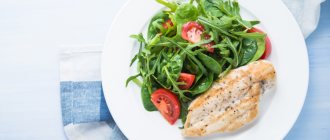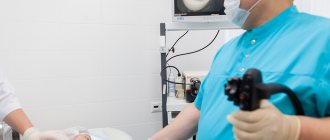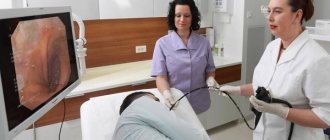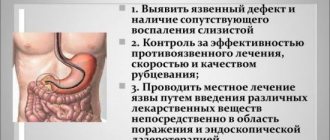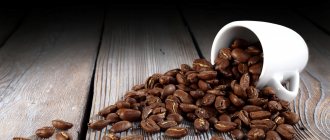Gastroscopy is a modern technique that allows for a visual examination of the upper gastrointestinal tract (the mucous membranes of the esophagus, stomach and part of the duodenum) and to diagnose possible pathological conditions. For this procedure, special endoscopic equipment is used - a fibrogastroscope.
It is a long tube that follows all the bends of the esophagus. At the end of the endoscope there is a camera and LEDs. They allow you to receive a picture on the monitor screen. Carrying out gastroscopy requires mandatory preliminary preparation, on which the accuracy of the result and comfort for the patient during the procedure itself largely depend.
Basic Rules
An adult needs to prepare for the procedure in advance (several days in advance). That is why the patient must be informed in advance about certain rules. Since this is an invasive technique that involves, albeit small, but still health risks, it is recommended to carry out the following studies and laboratory tests before performing it:
- electrocardiogram;
- clinical blood test;
- coagulogram;
- determination of blood group and Rh factor;
- blood tests for HIV, syphilis, hepatitis.
Scheme of gastroscopy
Preparation for gastroscopy of the stomach necessarily involves following a strict diet and short fasting immediately before the study. The doctor will tell you how many hours the patient should not eat. As a rule, the last meal is allowed 12 hours before the procedure.
If the procedure is performed under local anesthesia, then before it begins, a local anesthetic (Lidocaine) is injected into the patient's throat. If the patient is aware that he has an increased sensitivity to such drugs, then he must notify the doctor about this.
This study is done quickly - no more than 10 minutes. If there are circumstances where an examination is needed over a long period of time, a drug for general anesthesia is administered intravenously to the person. Before gastroscopy, you should also remove contact lenses (or glasses), dentures, and empty your bladder.
No ads 1
Necessary things
Before going to the hospital you should have with you:
- a medical record containing all the necessary tests and x-rays;
- sheet (for the couch);
- wet wipes and a towel (needed for heavy salivation or belching);
- replacement shoes or shoe covers.
You should also take with you the medications that you regularly take, as you may need them later.
After completing the FGDS, eating is prohibited for another 2 hours, so take drinking still water with you.
Examinations of the internal state of the stomach, intestines and duodenum can be done either free of charge in the hospital at the place of registration, or for a fee in private clinics. But this does not change the preparation process in any way. All preparatory steps must be followed equally. Before starting the procedure, be sure to remove anything that might get in your way, such as glasses or dentures. Lie down comfortably on the couch in a side position, relax and mentally tune up.
How to behave during gastroscopy
In order to properly prepare for gastroscopy of the stomach, the patient must know in advance how to behave and breathe correctly. Not all people tolerate the study well. Statistics show that painful sensations rarely occur, because modern endoscopes are small and thin.
But often a gag reflex occurs, interfering with the normal procedure. It is necessary to take evenly slow inhalations and exhalations through the nose. This allows you to relax and ensures that enough oxygen reaches your lungs.
Proper breathing will help make the procedure more comfortable
The following recommendations may also be helpful:
- Choose comfortable clothing for the procedure that will not restrict movement.
- Relax. Fear contributes to excessive tension in the muscles of the esophagus. This interferes with the free passage of the gastroscope. People with increased nervousness may be offered sedatives.
- Breathe correctly (through your nose only). If you breathe through your mouth, saliva can enter your respiratory tract and cause a cough.
What is needed before the procedure
Fibrogastroscopy is prescribed to identify various pathologies of the digestive tract, including neoplasms, ulcers, and inflammation. The reason may be the patient's complaints of pain in the hypochondrium, epigastric region, heartburn, heaviness in the stomach. Other objective signs may also indicate stomach diseases, for example, anemia, pale and flaky skin, and bad breath.
Consultative appointment
Before the procedure, be sure to consult with a gastroenterologist. He will find out and clarify your complaints, prescribe or cancel medications that you take regularly. Before the procedure, a psychological state is extremely important, so the doctor may prescribe sedatives and additional medications to lower blood pressure if he notices signs of an unstable psyche or panic attacks.
The doctor will identify conditions that influence the choice of anesthetic drugs during FGDS. He will ask about hypersensitivity to medications used in gastroscopy, cholelithiasis (magnesium sulfate is contraindicated), the presence of glaucoma (in this case atropine is contraindicated), other pathologies, as well as pregnancy and lactation.
Before fibrogastroscopy, it is important to consult a gastroenterologist
Diet before gastroscopy
One of the main questions is: what can you eat on the eve of diagnosis. Preparation for gastroscopy involves creating a certain diet. 3 days before the procedure, a special diet is prescribed. If a person is prone to flatulence, then during this period one should take medications prescribed by the doctor.
How to diagnose a stomach ulcer?
General recommendations for the diet:
- 5 meals a day;
- food is consumed in small portions;
- Dishes that cause increased gas formation are excluded from the diet;
- You need to drink at least 2 liters of plain water per day.
The day before gastroscopy, the most strict stage of the diet begins. What not to eat:
- strong coffee;
- juices;
- milk;
- fatty meat and fish;
- blue cheeses, mayonnaise and cream;
- sausages;
- smoked meats;
- spices;
- spicy dishes;
- legumes;
- dark varieties of bread;
- baking;
- alcoholic and carbonated drinks;
- pickled dishes;
- fresh vegetables and fruits;
- salo;
- chocolate;
- nuts.
Fried and fatty foods before gastroscopy are strictly prohibited
The diet before gastroscopy of the stomach is aimed at unloading the gastrointestinal tract. Preference is given to dishes that do not irritate the mucous membrane of the digestive tract. Patients are allowed to use:
- oatmeal and buckwheat porridge;
- mashed potatoes;
- boiled or baked vegetables;
- boiled chicken meat;
- eggs;
- sour cream and low-fat cottage cheese;
- low-fat soups;
- fruit and vegetable juices;
- herbal teas.
Allowed and prohibited foods before gastroscopy
| Can | It is forbidden |
| Mashed potatoes, porridge (rolled oats, buckwheat) | Fatty meat, fish |
| Vegetable soups | Pickled vegetables, smoked meats, canned food |
| Steamed meat cutlets from lean meats and fish | Mushroom dishes |
| Fruit decoctions | Seasonings, hot sauces, mayonnaise |
| Boiled eggs | Whole milk, full fat cottage cheese |
| Dried white bread | Pasta, yeast bread and baked goods |
| Baked vegetables, vegetable stew | Citrus fruits, tomatoes, legumes |
If the procedure is scheduled for the morning, then the last meal should be no later than 19:00.
Preparing for the procedure in the morning
Most often, diagnostics are scheduled for the first half of the day. If it is carried out in the morning, then in the evening the patient is prohibited from eating any food. It is forbidden to eat even easily digestible foods, as they can cause a decrease in diagnostic information.
Many patients ask the attending physician: “Is it possible to drink water before gastroscopy?” Experts advise drinking drinks at room temperature or warm the day before the test.
Avoid carbonated water, strong tea, coffee, and juices, because they affect the acidity of gastric juice. It is strictly forbidden to take alcohol, given its irritating effect on the mucous membranes and an increase in the gag reflex.
It is advisable to completely give up any liquid within 8-10 hours. In case of severe thirst, you can drink clean water without gas in small quantities - no more than half a glass (100 ml) 3 hours before the examination.
Preparation in the afternoon
If the procedure is scheduled for the afternoon, then a light breakfast is acceptable. In some clinics, patients are received for endoscopic diagnostics in the evening (until 18.00).
For breakfast, for example, you are allowed to eat low-fat yogurt with a piece of bread. For drinks, you can allow weak herbal tea or mineral water. At least 8 hours must pass from eating food to the procedure, and at least 3 hours from drinking liquids.
Recommendations for preparing for gastroscopy in the afternoon
| Study execution time | Recommendations |
| Reception at 14.00 | It is better to refrain from eating. If you need to adhere to your diet, you can eat a light breakfast before 7.00. Drink water before 12.00 |
| Reception at 16.00 | Last meal before 8.00. They drink water until 14.00 |
| Reception at 18.00 | You are allowed to have breakfast in the morning from 9.00 to 10.00. You can drink water after lunch until 16.00 |
Additional recommendations
Additional recommendations include tips that help ensure the most comfortable conditions for conducting the study:
- Do not use perfumes or deodorants with strong odors on this day. During the procedure, the gag reflex is exacerbated, so the smell can provoke a worsening of the situation or cause unnecessary discomfort. By the way, medical specialists may also experience discomfort due to the smell, or even allergic reactions.
- Comfortable clothes. It should be free and not be removed over the head.
- Brushing your teeth before the procedure is allowed, but drinking water is not allowed - it’s better to just rinse your mouth.
For FGD diagnostics, there are not only medical indications, but also contraindications that require mandatory correction:
- ARVI, sinusitis, tonsillitis, tonsillitis and other colds, accompanied by a number of unpleasant symptoms that may affect the quality of the study. It is first necessary to treat existing diseases and eliminate all symptoms that can lead to complications after diagnosis.
- The patient has a history of strokes and heart attacks in the last 6 months. It is necessary to wait for the body to recover after such serious illnesses. The patient is also prescribed hypertensive or antiarrhythmic drugs if there are relative contraindications to the FGDS procedure.
- Pregnancy. FGDS study in this case is carried out after successful delivery.
In fact, FGDS is a diagnosis that is not such a terrible manipulation that you should be so afraid of. It is important to understand that the results of the study will allow you to make the correct diagnosis and prescribe effective treatment. Preparation is easier with the support of loved ones and relatives. You can take advantage of advice on special thematic forums, where people who have undergone this procedure talk about their experiences. You can do an FGDS of the stomach quickly and without discomfort with us, for details follow the link.
Rules for preparing for a study with a biopsy
Adult patients can undergo advanced diagnostics - perform a gastric biopsy using gastroscopy. During the procedure, tissue samples are taken with special forceps at the border of the changed and healthy areas of the mucosa. The number of samples required for histological examination is from 3 to 5.
The biological material is sent to the laboratory for histological examination. The procedure is simple and rarely accompanied by complications. A biopsy is indicated in several cases. Here is their list:
- ulcerative defects of the mucous membrane;
- acute and chronic gastroduodenitis;
- neoplasms;
- assessment of the condition of the gastric epithelium after surgical interventions.
In addition to identifying pathological formations, a biopsy helps to identify Helicobacter pylori. Various studies of the obtained tissue sections are carried out.
Testing for Helicobacter pylori also includes other methods:
- microscopy;
- immunohistochemistry;
- PCR to clarify the presence of pathogen DNA;
- cultural method;
- pH-metry;
- urease test.
Several hours before FGDS, the strictest restrictions apply
Additionally, swabs are taken from the surface of the stomach and the degree of contamination of the mucous membrane is determined.
Performing gastroscopy under anesthesia
In this case, more thorough preparation is required. The patient must provide the results of an electrocardiogram and fluorography, as well as a number of laboratory tests. The doctor collects a thorough medical history and asks about existing chronic diseases.
If the patient has taken any medications in the last few weeks, he should inform the specialist about this. In order to prepare for anesthesia, doctors offer muscle relaxants. They help the body better absorb anesthesia.
To prevent complications, gastroscopy under anesthesia is performed in the presence of an anesthesiologist. Sleep duration is about 30 minutes. During this time, you can have time to conduct a study, take a biopsy and perform simple medical procedures (stop bleeding, remove a polyp).
After general anesthesia, it takes about a day to restore the nervous system. You cannot drive a car or engage in any activity that requires increased concentration.
The procedure can be performed under general anesthesia
Information for the doctor
Before FGDS, it is important to talk with your doctor about early diseases, symptoms that worry you, and allergic reactions, if any. This will ensure that the medical staff prepares you correctly for the endoscopy. For example:
- If the patient is prone to allergies, be sure to tell the doctor about it. FGS involves treating the pharynx with an anesthetic. If the patient is prone to allergies, you will need to select a drug that will not be sensitive to the body.
- Chronic pathologies are not a contraindication for FGS, but the doctor needs to be aware of them. During a biopsy, this information will help to avoid unnecessary trauma to the mucous membrane, so as not to provoke a relapse of this disease.
- During pregnancy, in the 1st and 2nd trimester, it is not recommended to use an anesthetic. As a rule, lidocaine is safe, but still, if there are contraindications, the procedure can be performed without anesthesia.
- If you have previously had surgery, taken a biopsy, or treated your stomach with medications, it is important to mention this to your doctor. This is due to the fact that the gastric mucosa in such situations becomes vulnerable to irritation during FGDS. A recovery period will be required for the study results to be accurate.
It is necessary to prepare for endoscopy carefully and ahead of time. Dietary nutrition, necessary tests and positive emotions will help you go through this procedure quickly and without problems.
Is it possible to smoke?
Tobacco smoke has an irritating effect on the upper digestive tract. You should not smoke the day before, because such a negative factor can cause difficulty in carrying out the procedure and incorrect interpretation of gastroscopy data.
It is recommended to refrain from bad habits 3-4 hours before diagnosis.
Gastroscopy is a popular and informative diagnostic method that allows you to detect pathologies of the gastrointestinal tract even at an early stage of development. The method has been successfully used in gastroenterology for many years.
In what volumes?
Restrictions also apply to the amount of liquid you can drink before the procedure.
Doctors give the following recommendations:
- The volume of water drunk 1-2 hours before inserting the probe into the body should not exceed 300 ml.
- The less you drink, the easier the patient will tolerate the procedure and the more informative the diagnostic method will be.
The volume of fluid consumed should be reduced both before and after endoscopic diagnosis.
